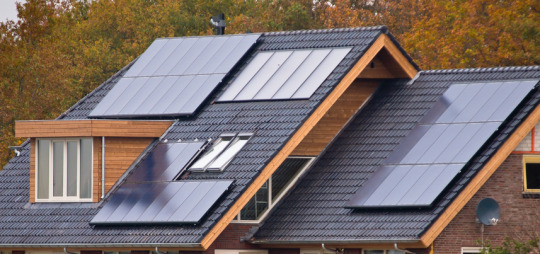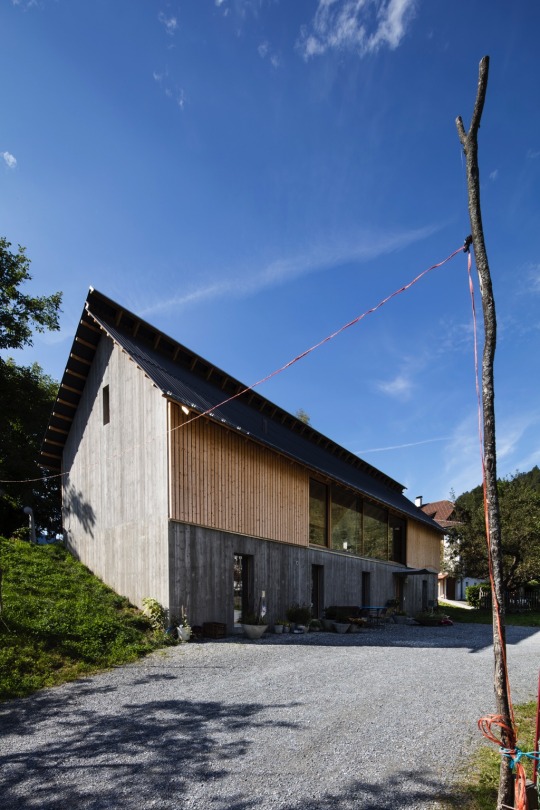#home solar panels
Explore tagged Tumblr posts
Text
Fellow Energy Solar Panel for Home Power Generation (550W, 10)
Fellow Energy Solar Panel for Home Power Generation (550W, 10)
Price: $1,359.00
Find more home solar panels at www.indraminer.shop
POWER OUTPUT: High-efficiency photovoltaic cells convert sunlight into electricity for residential and commercial applications
DURABILITY: Weatherproof construction with tempered glass surface protects against harsh elements and impacts
INSTALLATION OPTIONS: Compatible with both roof mounting and ground-level setups for optimal sun exposure positioning
PERFORMANCE: Advanced solar cell technology maximizes energy generation even in varying light conditions
DIMENSIONS: Standard size panel measures approximately 65 inches x 39 inches x 1.5 inches for practical installation
0 notes
Text
3 Best Price Ranges for Home Solar Panels
When considering the best price ranges for home solar panels, it is essential to strike a balance between cost and quality. The key lies in finding a sweet spot that offers affordability without compromising on efficiency.

These price ranges can vary based on location, incentives, and panel specifications. By exploring the best price points for solar panels, homeowners can make a well-informed decision that aligns with their budget and sustainability goals.
Making the right choice can not only lead to long-term savings but also contribute to a greener future.
Key Takeaways
Home solar panels in Texas range from $2.50 to $3.00 per watt.
Larger solar systems result in a lower cost per watt.
Utilize local rebates and incentives for reduced installation costs.
Optimal pricing post-tax credit is $2.50 to $3.05 per watt.
Consider bulk purchases for cost-effective solar solutions.
Solar Panel Cost Analysis
youtube
In analyzing the cost of solar panels, it is fundamental to take into account the average price per watt, tax incentives, and the overall price range to make informed decisions regarding solar system investments.
In Texas, the average cost of solar panels stands at $2.77 per watt in 2024. After considering the 30% federal tax credit, a typical 6 kW solar system in Texas costs $11,647. The price range for solar panels in Texas, post-tax credit, varies from $10,482 to $12,811, with a per-watt range of $2.50 to $3.05.
It is noteworthy to note that the installed cost of a solar system in Texas fluctuates based on system size and location. Understanding these cost dynamics is essential for individuals seeking to harness solar energy efficiently and cost-effectively.
Cost-Effective Solar Solutions
Considering various factors such as incentives, system sizes, and local rebates, cost-effective solar solutions can be customized to suit individual needs and budgets in Texas.
When examining home solar panels in Texas, the average cost ranges from $2.50 to $3.00 per watt in areas like Houston. By taking advantage of the local rebates and incentives offered in Texas, homeowners can greatly reduce the initial cost of solar panel installations.
It's important to note that the cost of a typical 6 kW solar system in Texas falls between $10,000 to $15,000 after factoring in these incentives. Additionally, choosing higher system sizes can result in a lower cost per watt for solar panel installations in Texas, making it a potentially cost-effective solution for homeowners in the long run.
To make sure you're getting the best price range, shopping around and comparing quotes from different installers is vital in finding the most cost-effective solar solution for your home in Texas.
Optimal Pricing for Solar Panels
The best pricing range for home solar panels in Texas, post federal tax credit, typically falls between $2.50 to $3.05 per watt.
When considering the most suitable pricing for solar panels, several factors come into play:
Solar system size: Installing larger solar systems in Texas can lead to a lower cost per watt, making bulk purchases a cost-effective option.
Local incentives: Understanding the available local incentives can greatly impact the overall cost of installing solar panels in Texas.
Factors affecting the cost: Roof conditions, power usage, and the choice of solar panel brand all play an essential role in determining the final cost per watt for Texas solar panels.
Conclusion
To sum up, the three top price ranges for home solar panels in Texas offer a balance between affordability and quality, ranging from $2.50 to $3.05 per watt post federal tax credit.
By investing in larger system sizes within these price points and leveraging local incentives and rebates, homeowners can lower the cost per watt and make a financially prudent choice for shifting to solar energy.
These price ranges provide a cost-effective solution for residents looking to adopt renewable energy sources.
0 notes
Text
Residential Solar Panels
Introduction to Residential Solar Panels:
Residential solar panels are photovoltaic (PV) systems designed to generate electricity for homes. By harnessing sunlight and converting it into electricity, these systems reduce dependency on the grid, lower electricity bills, and promote environmental sustainability.
How Residential Solar Panels Work:
Solar panels consist of multiple solar cells that absorb sunlight. The energy from sunlight knocks electrons loose in the solar cells, creating a flow of electricity. This direct current (DC) electricity is converted into alternating current (AC) electricity through an inverter, making it usable for household appliances.
Benefits of Residential Solar Panels:
Energy savings: Solar panels can significantly reduce or even eliminate your electricity bills, especially in areas with high energy costs.
Environmental impact: Solar energy is a clean and renewable source of power, reducing your carbon footprint.
Energy independence: By generating your own electricity, you become less reliant on external energy providers.
Increased home value: Homes with solar panels often have a higher resale value due to the long-term savings they provide.
Government incentives: Many regions offer tax credits, rebates, or subsidies to encourage solar adoption, reducing the initial investment cost.
Installation Process:
Site assessment: A solar company will evaluate your roof’s size, orientation, and exposure to sunlight.
Design: A customized solar panel system will be designed based on your energy needs.
Permitting: Necessary permits are obtained from local authorities.
Installation: The solar panels, inverter, and other equipment are installed.
Inspection and connection: The system is inspected and connected to the grid, allowing you to start generating solar power.
Types of Residential Solar Panels:
1. Monocrystalline Panels: Known for their high efficiency and sleek appearance, these are made from a single crystal structure.
2. Polycrystalline Panels: These are less expensive and slightly less efficient but offer good value for homeowners.
3. Thin-Film Panels: These are lightweight and flexible, making them ideal for roofs with weight constraints, though they are generally less efficient.
Maintenance of Residential Solar Panels:
Solar panels require minimal maintenance, such as periodic cleaning to remove debris and dust. Regular inspections ensure that the system functions optimally, with occasional inverter replacements needed over the system's lifespan.
Cost of Residential Solar Panels:
The cost varies based on system size, location, and type of panels. On average, a residential solar system can cost between $10,000 and $30,000 before incentives. However, many homeowners can reduce this cost through government rebates and financing options.
Conclusion:
Residential solar panels are an excellent investment for homeowners looking to save on energy costs, reduce their environmental impact, and increase the value of their property. With government incentives and technological advancements, now is a great time to consider going solar.
www.solarkart.co.in
https://www.instagram.com/solar.kart/
Home solar panels, Residential solar power, solar energy for homes, best residential solar panels, Residential solar system installation, Cost of residential solar panels, Residential solar panel savings, Solar panel installation for homes, Home solar power systems, Residential solar energy solutions, Rooftop solar panels for homes

#Home solar panels#Residential solar power#solar energy for homes#best residential solar panels#Residential solar system installation#Cost of residential solar panels
0 notes
Text
The Ultimate Guide to Eco-Tech: Sustainable Solutions for Everyday Life
Introduction
In our rapidly changing world, adopting eco-tech products and solutions becomes reasonably necessary to lead a sustainable life. Eco-tech products and practices are innovations that ensure lesser impact on the environment and bring sustainability to your doorstep. At TechtoIO, we strive to help you cut through the best possible eco-tech options that will make a difference in your everyday life. Let us look at how you could get those sustainable solutions into your life. Read to continue link
#Eco-Tech#Tagscomposting systems#eco-friendly innovations#eco-friendly personal care#eco-friendly products#eco-tech solutions#electric bikes and scooters#electric vehicles#energy-efficient appliances#energy-efficient home#green cleaning solutions#home solar panels#low-flow fixtures#renewable energy#smart home devices#smart irrigation systems#smart recycling bins#sustainable building materials#sustainable living#sustainable transportation#water conservation technologies#Technology#Science#business tech#Adobe cloud#Trends#Nvidia Drive#Analysis#Tech news#Science updates
1 note
·
View note
Text
Unleashing the Power of the Sun: A Guide to Home Solar Panels
In an age where sustainability and energy efficiency are paramount, home solar panels have emerged as a leading solution for homeowners looking to harness clean, renewable energy while reducing their carbon footprint. At Solid Solar Services, we're dedicated to empowering homeowners with high-quality solar panel solutions that not only lower energy bills but also contribute to a greener future. In this blog post, we'll explore the benefits of home solar panels and why they're a smart investment for any household.

1. Clean, Renewable Energy Source:
Home solar panels harness the abundant energy of the sun to generate electricity, making them a clean and renewable energy source. Unlike fossil fuels, which emit harmful greenhouse gases and contribute to air pollution and climate change, solar energy is clean, abundant, and infinitely renewable. By investing in home solar panels, homeowners can reduce their reliance on fossil fuels and help protect the environment for future generations.
2. Significant Cost Savings:
One of the most compelling reasons to invest in home solar panels is the potential for significant cost savings on energy bills. Solar panels generate electricity from sunlight, allowing homeowners to produce their own clean energy and reduce their dependence on grid-supplied power. With the right solar energy system in place, homeowners can enjoy lower energy bills and protect themselves against rising electricity costs in the long run.
3. Environmental Sustainability:
Home solar panels produce no greenhouse gas emissions or air pollutants during operation, making them an environmentally friendly energy solution. By switching to solar power, homeowners can significantly reduce their carbon footprint and contribute to mitigating climate change. Additionally, solar energy helps conserve natural resources and reduces reliance on non-renewable energy sources like coal and natural gas.
4. Increased Property Value:
Installing home solar panels can enhance the value and marketability of residential properties. Homes equipped with solar panels are highly attractive to environmentally conscious buyers who value energy efficiency and sustainability. Solar-powered homes typically command higher resale values and sell faster than non-solar homes, making them a wise investment for homeowners looking to increase their property's appeal and desirability.
5. Government Incentives and Rebates:
Homeowners can take advantage of various government incentives and rebates to offset the cost of installing home solar panels. Programs such as the Small-scale Renewable Energy Scheme (SRES) provide financial incentives for eligible solar installations, making solar power more affordable and accessible for homeowners. Additionally, feed-in tariffs allow homeowners to earn credits for surplus solar energy exported to the grid, further maximizing the financial benefits of solar power.
Experience the Benefits of Solar with Solid Solar Services:
At Solid Solar Services, we're committed to helping homeowners harness the full potential of solar power to power their homes efficiently and sustainably. With our expertise in solar panel technology and dedication to customer satisfaction, we'll guide you through every step of the solar installation process—from system design and engineering to installation and maintenance. Contact us today to learn more about our home solar panel solutions and start enjoying the numerous benefits of solar power for your home.
0 notes
Text
Explore the fascinating world of residential solar systems in 'Sun on Demand.' This insightful guide unveils the mechanics behind harnessing solar energy for homes, shedding light on photovoltaic technology and energy storage. Gain a comprehensive understanding of how these systems work seamlessly to provide sustainable power. Uncover the secrets of turning sunlight into a reliable, on-demand energy source for a brighter and greener future.
#residential solar systems#best residential solar panels#best residential solar system#canberra residential solar#home solar panels#residential solar#residential solar energy#residential solar energy system#residential solar installation#residential solar panel installation#residential solar power#residential solar power system#residential solar panel#best solar installers canberra
0 notes
Text
Home solar panels are becoming popular for homeowners looking to reduce their energy costs. If you’re overwhelmed by many solar panels on the market, we got you! We’ve provided a list of the best home solar panels you can buy today!Homeowners can lower their monthly energy bills by harnessing the sun’s power. They can reduce their carbon footprint and contribute to a more sustainable future. So if you’re considering going solar, now is the time to take advantage of all the benefits of home solar panels.
0 notes
Text
Dandelion News - December 1-7
Like these weekly compilations? Tip me at $kaybarr1735 or check out my Dandelion Doodles for 50% off this month!
1. These high-tech windows fight climate change – and will save you money

“[“Vacuum-insulated glass”] insulates five times better than double-paned glass. The Enthermal product line holds energy about as well as fiberglass wall insulation[…. T]he energy bill savings offset the upfront cost of the upgrade in two to seven years, depending on the building[….]”
2. Doulas test ways to curb Memphis’ Black maternal, infant deaths

“Research shows they are key to better health outcomes. […] Free of charge, [parents enrolled in this pilot program], in addition to being paired with a doula, get access to free yoga classes, diapers, breastfeeding starter kits, nutritious food and other tangible help that can measurably boost well-being.”
3. Scientists find feeding grazing cattle seaweed cuts methane emissions by almost 40%

“This is the first study to test seaweed on grazing beef cattle in the world. […] Most research to reduce methane emissions using feed additives has taken place in controlled environments with daily supplements. But Kebreab noted in the study that fewer than half of those methods are effective for grazing cattle.”
4. Success for local residents as Florida council toppled over sewage plant plan

“A citizens’ revolt in a small Florida city ousted an entire slate of councilors who were pushing for a new sewage plant to be built close to one of the state’s most pristine and treasured rivers.”
5. Beaver survey aims to show the urban benefits of Chicago's 'ecosystem engineers'

“Urban Rivers is installing [“artificial floating gardens”] along the river to restore native wetland habitats, which provide food and shelter for wildlife, as well as natural spaces for humans.”
6. The future of plastic: Biodegradable, durable, and even edible

“[… T]he composite plastic proved not only sturdy but also more malleable than its core component, hydroxyethyl cellulose. Additionally, since both cellulose and tyrosine are edible, the biodegradable composite plastic can technically be consumed.”
7. Limestone quarries could be vital for wild bee conservation

“Quarries provide valuable habitats for wild bees and other animals and plants that occur on the now rare calcareous grasslands," explains lead author Dr. Felix Kirsch[….]”
8. New England wedding vendors offer help to same-sex couples before Trump inauguration

“Marriage equality isn’t immediately at risk. Trump has said he considers it settled law, but of course it’s hard to take him at his word […] so vendors in the region are offering free or discounted services to queer couples and noncitizens in a rush to marry.”
9. The indigenous women saving India's endangered giant yams

“Since their formation in 2022, the 10 members of the Noorang group have planted and brought back to the community 180 varieties of wild tubers[….] The project is part of [… a] farming initiative to eradicate poverty, provide agricultural training and empower women in vulnerable tribal communities.”
10. The US is making and deploying more solar panels than ever before

“[… D]omestic solar module manufacturing capacity has nearly quintupled since 2022[….] Solar is the cheapest source of new power generation by far, and it’s an increasingly large employer in the U.S., particularly in Republican-led states.”
November 22-28 news here | (all credit for images and written material can be found at the source linked; I don’t claim credit for anything but curating.)
#hopepunk#good news#solar panels#solar energy#solar power#climate change#co2 emissions#cattle#seaweed#india#yams#food insecurity#beaver#habitat#conservation#bees#florida#civic engagement#new england#same sex marriage#gay marriage#marriage#us politics#plastic#science#home improvement#thermal insulation#parenting#perinatal#medicine
68 notes
·
View notes
Text







House Schneller Bader, Tamins, Switzerland - Bearth & Deplazes
#Bearth & Deplazes#architecture#design#building#modern architecture#interiors#minimal#house#concrete#house design#modern#timber#timber cladding#wood architecture#roof#solar panels#green energy#alpine#mountains#beautiful home#cool architecture#cool homes#eco#sliding door#glass#switzerland#swiss design#architecture blog#dining room#village
89 notes
·
View notes
Text
i wrote this as a joke because I wanted to strangle a guy watching tiktoks without headphones on the bus, but im genuinely disturbed that we've gotten to a point where convenience comes first. and it depresses me even more that its used to justify and monetize greed
#like we have so many ways of doing things that could help us in the long run but because we're told it requires more work we just cant#its too resource intensive. or maybe its too much to maintain. we have to overlook benefits so money can go into more important things#we teach each other to do things a certain way so it works for everyone but who was it convenient for first? what abt who it might hurt?#i have to wonder if the rules our current system uses is worth listening to or following if it doesnt have our best interests in mind. u an#me and the ppl around us.. would we be better off if i ate my meals knowing the person who grew it wanted to feed others the way they could#feed themselves? and that isnt to say we're going to be happy doing it but i guess satisfied that its helping someone instead of quietly#accepting that itll eventually go in the dumpster behind a grocery store because it stopped looking appetizing or it wasnt on sale anymore#what about building homes so we can shelter each other? what if we were satisfied with what we did because we knew it would be paid back#with kindness? isnt that what we evolved to do?? heal each others bones and tell stories and help each other??#why dont houses come with solar panels or generators unless we find a way to make people pay to use the sun? why is our pooled money used#to fund genocides instead of education and hospitals? whose interests and convenience came first when we started this??#i wont pretend to know the answer because i dont. but we all know we're miserable and im sorry to say that i cant see myself fighting#for a world that wont fight for me too. why do we work if we cant live from it?? why did they stop us from plucking more teeth from our#bosses until they could build more walls around themselves and then go back to underpaying us??#im so tired. i cant even imagine making it to age 70#yapping#vent
77 notes
·
View notes
Text

Today is such a special day, as our solar panels have gone on and we’re finally able to generate some of our own electricity. It’s been a long time coming, but at last we can tick this stage off the list.
Happy and grateful … 🥹👍
#scotland#lifestyle#outdoors#adventure#handmade#family#travel#homesteading#craft#countrylife#countryliving#countrygirl#summer#project#solar panels#solar system#solar energy#solar power#self sufficient living#rurallife#greenenergy#greenliving#happy#grateful#homesteader#good vibes#goodday#home improvement#sustainability#offgrid
21 notes
·
View notes
Text
"everything you want is on the other side of fear" no it's on the other side of brutal burnout, fuck you
#hallie speaks#“home improvement” is an interesting process when you have no grid power and are running off diy solar you got secondhand#Figuring out how to get it from the panels to the outlets is a tripppp and I'm not even the one doing most of the work
8 notes
·
View notes
Text
5 Easy Steps to Install Solar Panels

Installing solar panels is a streamlined process that, when broken down into five distinct steps, can be effectively managed to guarantee both efficiency and compliance.
Beginning with a thorough assessment of your energy needs and evaluating the available roof space is the first critical step. This is followed by securing the necessary permits to meet regulatory standards.
Site preparation, including roof inspection and potential electrical upgrades, sets the stage for a successful installation. Mounting the panels for ideal sunlight exposure is key, and finally, connecting and testing the system guarantees peak performance.
Curious about mastering these steps? Keep reading to learn more.
Assess Your Energy Needs
youtube
To accurately assess your energy needs, begin by calculating your average monthly energy consumption, taking into account any seasonal variations that may affect usage. This step is essential for determining the appropriate size of your solar panel system.
Analyze your electricity bills over the past year to identify patterns in energy usage, noting peak months and times of reduced consumption.
Next, evaluate your roof space and orientation to understand the potential for maximum energy production. The amount of roof space available will directly influence the number of solar panels that can be installed. South-facing roofs generally yield the highest energy output, but east and west orientations can also be effective.
It's important to factor in any future energy needs or expansions when sizing your solar panel system. Anticipate any increased energy consumption, such as adding electric vehicles or expanding your home, to ensure your system remains efficient over time.
Consulting with a solar energy expert can provide valuable insights and recommendations. They can assess your specific energy needs, roof space, and guide you towards the right system size for maximum efficiency and sustainability.
Secure Necessary Permits
Obtaining the necessary permits for solar panel installation is a critical step to guarantee compliance with local building codes and safety regulations. The permitting process involves submitting detailed documentation and plans to local authorities for review and approval.
This documentation typically includes site plans, electrical diagrams, and specifications of the solar panel system. Ensuring that these documents are precise and thorough can greatly streamline the approval process.
Compliance with building codes and safety regulations is paramount, as failure to obtain the appropriate permits can result in substantial fines, project delays, or even the mandatory removal of the installed solar panels.
Each locality may have its own unique permitting requirements, making it essential to research and understand the specific regulations in your area.
Engaging a professional installer can be highly beneficial, as they are well-versed in the permitting process and can efficiently navigate the complexities involved. Professional installers often have established relationships with local authorities, which can expedite the approval process and ensure that all necessary permits are secured without incident.
Prepare Installation Site
Evaluating the installation site starts with a thorough review of your home's roof condition, confirming structural integrity and sufficient space for solar panel placement.
Begin by evaluating the roof condition to verify it can support the added weight of the solar panels and withstand environmental elements. Structural integrity is crucial to avoid future complications.
Next, identify any potential shading issues that could impede the efficiency of your solar panel installation. This includes examining nearby trees, buildings, and other structures that could cast shadows on your panels, reducing their effectiveness.
The orientation of the roof plays a crucial role; ideally, it should face south to ensure optimal sunlight exposure throughout the day.
Simultaneously, consider any necessary electrical panel upgrades that may be required. The existing electrical panel must be capable of handling the additional load from the solar panel system. It's important to consult with a licensed electrician for this evaluation.
Mount the Solar Panels
After confirming the installation site is well-prepared and all potential issues have been addressed, proceed to securely mount the solar panels on the roof using high-quality racking systems engineered for durability and stability. Following manufacturer instructions is crucial to achieve ideal panel placement, maximizing sunlight exposure and energy production.
When mounting the solar panels, it is vital to account for various environmental factors such as wind, rain, and potential shading. Ensure the panels are securely fastened to the racking system to prevent any damage from adverse weather conditions. Using appropriate tools and equipment is paramount for a safe installation process.
Consider the following key points to guarantee an effective installation:
Roof Orientation: Position panels to capture maximum sunlight throughout the day.
Shading: Avoid placing panels in shaded areas to prevent energy production loss.
Structural Integrity: Verify the roof can support the additional weight of the solar panels and racking system.
Racking System Compatibility: Ensure the racking system is compatible with the roof type and solar panel model.
Secure Fastening: Utilize appropriate fasteners and techniques to ensure panels remain securely in place under various environmental conditions.
Connect and Test System
To guarantee efficient energy conversion, start by connecting the solar panels to the inverter, paying close attention to proper wiring and secure connections.
Make sure that all wiring adheres to electrical codes and guidelines to prevent any potential issues. Utilizing the correct gauge wire is essential to handle the specific voltage output from the solar panels.
During the testing phase, verify that the system functions correctly by checking the voltage output. Utilize a multimeter to measure the voltage and ensure it aligns with the expected levels. Monitoring the energy production levels will provide insights into the system's efficiency and performance.
Inspect all electrical connections thoroughly to confirm they are secure and intact. Any loose or improperly connected wiring can lead to inefficiencies or potential hazards. Adherence to safety protocols is critical; always use insulated tools and wear appropriate protective gear during this phase.
Conduct a thorough inspection of the entire system, including mounting hardware, connectors, and the inverter itself, to identify any issues or areas needing adjustment.
Confirm that the system is generating electricity as anticipated before deeming the installation process complete. This final verification step ensures the long-term reliability and efficiency of your solar power system.
Conclusion
Installing solar panels involves critical procedures to guarantee peak functionality and efficiency.
Evaluating energy requirements and assessing roof space is the initial step. Securing permits and adhering to regulations is necessary before installation commences.
Site preparation, including roof condition and electrical system upgrades, is crucial. Properly mounting the panels to maximize sunlight exposure and correctly connecting the system are essential steps.
Finally, system testing verifies performance, ensuring the solar panels are ready to generate clean energy effectively.
#solar panel installation#home solar panels#home solar system#solar power installation#solar power system#Youtube
0 notes
Text
The Benefits of Residential Solar Solutions in Australia
With the rising costs of electricity and growing concerns about environmental sustainability, more Australian homeowners are turning to solar energy. Devam Solar Australia, with over seven years of experience in solar panel fitting, maintenance, and supply, is committed to providing high-quality Devam Solar Residential Solutions. If you’re considering switching to solar energy, here are some key benefits to keep in mind.

1. Significant Cost Savings
One of the biggest advantages of installing a solar system is the reduction in electricity bills. By generating your own energy, you can cut down on grid dependency and save thousands of dollars in the long run. Additionally, Australia offers various incentives, rebates, and feed-in tariffs that allow homeowners to earn credits for excess energy sent back to the grid.
2. Sustainable and Eco-Friendly
Solar energy is a renewable and clean source of power, reducing your household’s carbon footprint. Unlike fossil fuels, solar panels produce energy without emitting greenhouse gases, making it a great choice for environmentally conscious homeowners. By switching to solar, you contribute to a greener future for Australia.
3. Increase in Property Value
Homes with solar panel installations are in high demand. Many buyers are willing to pay a premium for energy-efficient properties. A solar system not only enhances your home’s value but also makes it more attractive in the competitive real estate market.
4. Energy Independence and Security
With solar power, you can generate your own electricity and reduce reliance on external power sources. This is particularly beneficial in areas with frequent power outages or fluctuating energy prices. Installing a battery storage system allows you to store excess energy for use during nighttime or cloudy days, ensuring an uninterrupted power supply. Devam Solar's Reliable Batteries ensure that you have a consistent and efficient power backup.
5. Low Maintenance Costs
Residential solar systems require minimal maintenance, making them a cost-effective energy solution. Devam Solar provides professional installation and ongoing maintenance services to ensure the efficiency and longevity of your system. With periodic cleaning and occasional check-ups, solar panels can last for over 25 years. Devam Solar Comprehensive Services cover everything from installation to maintenance, ensuring seamless energy solutions for your home.
6. Government Incentives and Rebates
The Australian government offers financial incentives to encourage homeowners to install solar panels. Programs like the Small-scale Renewable Energy Scheme (SRES) provide rebates that significantly reduce the upfront cost of solar system installation. Additionally, state-based incentives further enhance affordability, making Affordable Solar Solutions Victoria a reality for many homeowners.
7. Support for a Sustainable Future
By switching to solar power, you play a crucial role in Australia’s transition towards renewable energy. Investing in solar solutions contributes to reducing the demand for non-renewable energy sources, promoting a cleaner and more sustainable environment for future generations. NetCC Solar Solutions in Victoria provides advanced solar technologies that enhance energy efficiency and sustainability.
Why Choose Devam Solar?
With over seven years of expertise in the Australian solar industry, Devam Solar specializes in high-quality Devam Solar Residential Solutions and Devam Solar Commercial Solutions. Our team is dedicated to delivering efficient and reliable solar solutions tailored to meet your specific energy needs. Whether you’re looking to reduce electricity costs, enhance property value, or contribute to a greener planet, we have the right solution for you.
We also offer Solar Batteries & Heat Pump Services Australia, ensuring that you get the best power storage solutions for your needs. As part of devam group, we integrate innovative technologies to deliver the best solar energy solutions, including NetCC Solar Solutions and Commercial Solar Solutions.
Make the smart switch today! Contact Devam Solar to learn more about our Devam Solar Residential Solutions and take the first step towards energy independence with our Affordable Solar Solutions Victoria.
#Solar#Solar Solutions#Solar Australia#Solar Panels#Residential Solar#Home Solar#Devam Solar#Devam Solar Australia#Devam Solar Residential Solutions#Power Your Business With Devam Solar#Devam Solar Commercial Solutions#Devam Solar Comprehensive Services#Devam Solars Reliable Batteries#Solar Batteries & Heat Pump Services#devam group#Netcc Solar Solutions#Affordable Solar Solutions Victoria#Solar Batteries & Heat Pump Services Australia#devam technologies#Solar Batteries & Heat Pump Services Victoria#affordable solar solutions#NetCC Solar Solutions in Victoria#Commercial Solar Solutions
3 notes
·
View notes
Text
Why Solar Earthing is Essential for Your Solar Panel System
When you think about solar power, you probably picture sleek solar panels soaking up the sun, cutting down electricity costs, and promoting clean energy. But there’s one crucial element that often goes unnoticed—solar earthing. This unsung hero ensures your solar installation runs safely and efficiently for years.
In this blog, we’ll explore what solar earthing is, why it’s essential, and how it benefits both large solar power plants and smaller solar setups.

What is Solar Earthing?
Solar earthing, also called grounding, is the process of connecting your solar panel system to the earth using conductive materials like copper or galvanized steel. The goal? To safeguard your system and everyone around it from electrical faults or lightning strikes.
Solar panel systems generate electricity, and with that comes the risk of faults due to factors like harsh weather, aging equipment, or unexpected electrical surges. A well-planned earthing system safely directs any stray or excess current into the ground, preventing hazards.
Why is Solar Earthing Important?
1. Ensures Safety for Users and Equipment
Solar systems operate with high electrical loads. Without proper earthing, an electrical fault can lead to dangerous shocks, fires, or damage to your system. A solid grounding setup protects your investment and ensures safety for all.
2. Boosts Efficiency in Solar Power Plants
For large-scale solar power plants, even a minor electrical fault can lead to substantial losses. Solar earthing stabilizes voltage levels, preventing disruptions and maintaining optimal efficiency.
3. Meets Regulatory Standards
Many countries have strict regulations requiring proper solar earthing for installations. Compliance not only helps avoid legal penalties but also guarantees a longer-lasting and safer system.
How Does Solar Earthing Work?
A solar panel system consists of several key components, including:
Solar panels
Inverters
Batteries (for off-grid systems)
Mounting structures
A proper earthing setup connects all these components to the ground using a network of conductors. If an electrical fault or lightning strike occurs, the current safely disperses into the ground instead of damaging the system or posing risks.
Different Types of Solar Earthing
The type of earthing method depends on the size and type of the solar installation. Here are three commonly used methods:
1. Plate Earthing
A metal plate, typically copper or galvanized iron, is buried underground and connected to the system. This is a common method for small-scale residential solar panel setups.
2. Rod Earthing
Metal rods are driven deep into the ground to ensure effective grounding. This method is ideal for larger solar power plants due to its efficiency and ability to handle higher electrical loads.
3. Strip Earthing
Conductive metal strips are laid underground to create a broad earthing network. This method is used for installations requiring a larger grounding surface area.
Key Benefits of Proper Solar Earthing
Enhances the Lifespan of Solar Installations A well-grounded system protects against electrical surges, reducing wear and tear and extending the life of your solar panels.
Improves System Reliability By keeping voltage levels stable, solar earthing ensures uninterrupted performance—even during extreme weather conditions.
Reduces Maintenance Costs A properly earthed system lowers the risk of electrical damage, minimizing costly repairs and replacements.
Provides Peace of Mind Knowing that your solar system is safeguarded from electrical hazards lets you enjoy clean, renewable energy without worry.
Earthing in Large Solar Power Plants
For utility-scale solar power plants, effective earthing is even more critical. These expansive installations require robust earthing systems, often incorporating advanced techniques like lightning arresters, to handle high electrical loads and unpredictable environmental factors.
Challenges in Solar Earthing
Despite its importance, solar earthing faces a few challenges:
Poor Soil Conductivity – In areas where the soil doesn’t conduct electricity well, additional measures like moisture-retaining compounds may be needed.
Corrosion of Earthing Components – Over time, earthing rods and plates may corrode, especially in humid regions. Regular maintenance helps prevent this.
Incorrect Installation – Faulty installation can compromise safety and efficiency. Always rely on experienced professionals to set up your system.
Best Practices for Effective Solar Earthing
Use High-Quality Materials – Opt for durable conductors like copper or galvanized steel for long-term reliability.
Schedule Regular Inspections – Routine maintenance helps catch potential issues early and keeps your system running smoothly.
Follow Local Regulations – Adhering to safety and compliance guidelines ensures your solar installation meets industry standards.
Final Thoughts
While solar earthing may not be the most talked-about aspect of solar energy, it’s one of the most vital. Whether you’re installing a small residential system or a large solar power plant, proper grounding is key to ensuring safety, efficiency, and long-term performance.
By investing in a reliable earthing setup, you’re not just protecting your solar panels you’re ensuring a secure and hassle-free switch to clean energy.
#solar earthing#solar panels for home#best solar panel in india#solar energy#solar panel installation#solar panel system#rooftop solar panels
3 notes
·
View notes
Text

Autumn shows us how beautiful it is to let things go. 🍃🍂🍂🍁
#off the grid#offgrid#offthegrid#off grid#homestead#solar power#solar energy#diy tiny home#solar panels#solar#fall forest#fall vibes#fall season#fall
20 notes
·
View notes